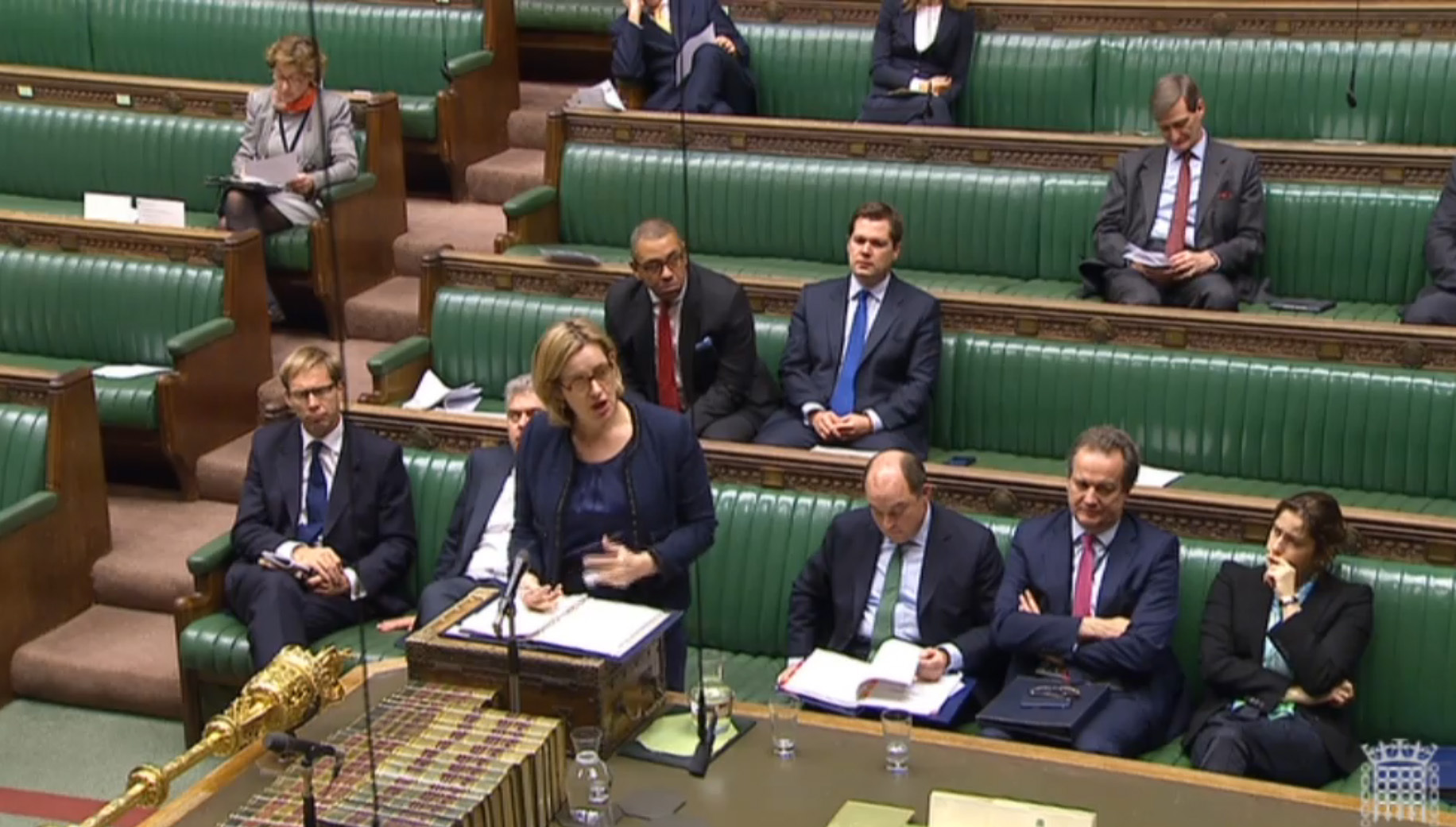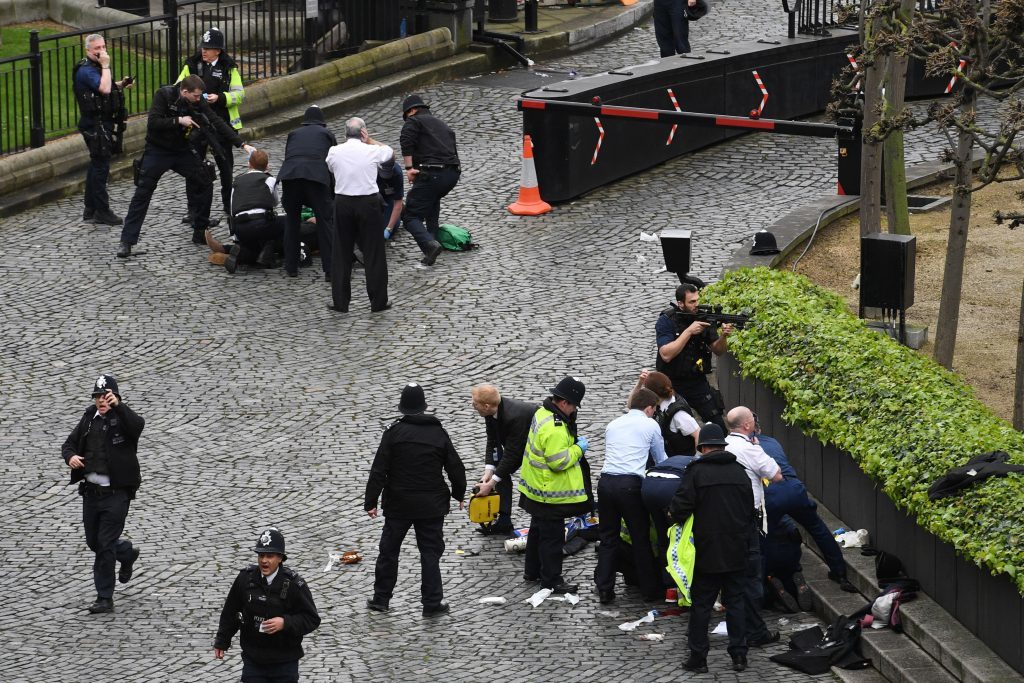
MI5 was “actively” investigating the ringleader of the London Bridge atrocity at the time of the rampage, while the Manchester bombing could have been stopped “had the cards fallen differently”, an official assessment has found.
It discloses that three terrorists involved in four attacks that hit Britain between March and June this year had at some point been on authorities ‘ radar.
The UK’s security apparatus faced questions after dozens of victims were killed or injured at Westminster, Manchester, London Bridge, and Finsbury Park.
MI5 and police launched independent reviews to examine what was known about the terrorists before they struck, decisions made on intelligence and possible areas for improvement.
An independent assessment of the findings by David Anderson QC, concludes that there is “no cause for despair”, saying most attacks continue to be successfully disrupted.
But he notes that, other than the case of Finsbury Park, it cannot be said that MI5 and police were “entirely blindsided”.
The report says: “Substantial and appropriate coverage was in place around key individuals and mechanisms designed to assess risk were working as intended.
“MI5 and counter-terrorism policing got a great deal right: particularly in the case of Manchester, they could have succeeded had the cards fallen differently.”
Salman Abedi was not under active investigation when he detonated a suicide device at Manchester arena in May.
But Mr Anderson’s review says that MI5 came by unspecified intelligence in the months before the attack which, “had its true significance been properly understood”, would have caused an investigation into him to be opened.
The report says: “It is unknowable whether such an investigation would have allowed Abedi’s plans to be pre-empted and thwarted. MI5 assesses that it would not.”
Abedi was also identified by a separate “data-washing exercise” as falling within a small number of former subjects of interest who merited further consideration.
However, a meeting scheduled to consider the results of this process had not been held at the time of the bombing, in which 22 people were killed.
An opportunity was also missed to place Abedi on “ports action” after he travelled to Libya in April.
Westminster attacker Khalid Masood was known to police and MI5 for association with extremists.
But he was a closed subject of interest at the time of the atrocity in March, and intelligence officers and police had no reason to anticipate his murderous actions, according to the report.
It also reveals how in the days prior to the attack, Masood conducted reconnaissance of Westminster Bridge in person and online, and browsed YouTube for videos relating to terrorism.
Minutes before he struck, the terrorist shared a “Jihad document” with numerous WhatsApp contacts.
Khuram Butt, who led the three-strong gang behind the London Bridge van and knife attack in June, was the principal subject of an MI5 investigation from mid-2015 until the date of the deadly assault.
The report says material relating to Butt received in the two weeks prior to the attack added little to the intelligence picture and did not identify activity that led up to the attack.
Another of the London Bridge gang, Youssef Zaghba, was placed on an EU warning list in March last year but a marker which would have automatically identified him as a national security risk was deleted by Italian authorities in January.
In June 2016, MI5 received an inquiry from Italian authorities about Zaghba but the agency has no record of responding – “noting by way of possible explanation that it arrived in the incorrect mailbox”.
The request was not chased up by Italian officials.
Zaghba, and the third London Bridge attacker Rachid Redouane, were never investigated by MI5.
Police and MI5 have foiled nine plots since the Westminster attack in March, in addition to the terrorist incidents that have occurred.
The scale of the current threat is seen as unprecedented.
Counter-terror teams are running about 500 live investigations involving 3,000 individuals at any one time, while there is also a wider pool of 20,000 subjects previously looked at who must be kept under review.
Mr Anderson, a former anti-terror laws watchdog, said: “The excellent recent record of MI5 and the police in defending the UK from terrorist attack came to a brutal end this year at Westminster, Manchester Arena, London Bridge and Finsbury Park.
“Despite elevated threat levels, the fundamentals are sound and the great majority of attacks continue to be thwarted.
“But the shock of these incidents has prompted intensive reflection and a commitment to significant change.”
The full internal reviews, which are highly classified and run to more than 1,100 pages, contain 126 recommendations.
Mr Anderson said: “In particular, MI5 and the police have identified the need to use data more effectively, to share knowledge more widely, to improve their own collaboration and to assess and investigate terrorist threats on a uniform basis, whatever the ideology that inspires them.”
Outlining the review findings, Home Secretary Amber Rudd told MPs that blame for the “cowardly” attacks “lies squarely” with the terrorists and those who encouraged them.
Ms Rudd went on to say: “In the case of London Bridge, Khuram Butt was an active subject of interest who had been under investigation since mid-2015.
“A number of different investigative means were deployed against him, but they did not reveal his plans.
“His two conspirators had never been investigated by MI5 or CT policing.
“In regards to Finsbury Park, neither MI5 nor the police had any intelligence about this attack.
“Taken as a whole, MI5 and CT policing conclude they could not, quote, ‘find any key moments where different decisions would have made it likely that they could have stopped any of the attacks’.”
Ms Rudd also outlined the terror threat facing the UK, saying there was “simply more terrorist activity” which had been partly inspired by more terrorist propaganda and instruction videos online.
“Plots are developing more quickly from radicalisation to attack, and threats are becoming harder to detect, partly due to the challenge of accessing communications that are increasingly end-to-end encrypted,” said the Home Secretary.
“MI5 and counter terrorism policing are currently running well over 500 live operations, a third up since the beginning of the year, involving roughly 3,000 subjects of interest.
“In addition, there are over 20,000 further individuals, or closed subjects, of interest, who have previously been investigated and may again pose a threat.”
She added that MI5 and the police had disrupted 22 Islamist terrorist plots since the murder of Lee Rigby in May 2013, including nine since the Westminster attack in March.

Enjoy the convenience of having The Sunday Post delivered as a digital ePaper straight to your smartphone, tablet or computer.
Subscribe for only £5.49 a month and enjoy all the benefits of the printed paper as a digital replica.
Subscribe
